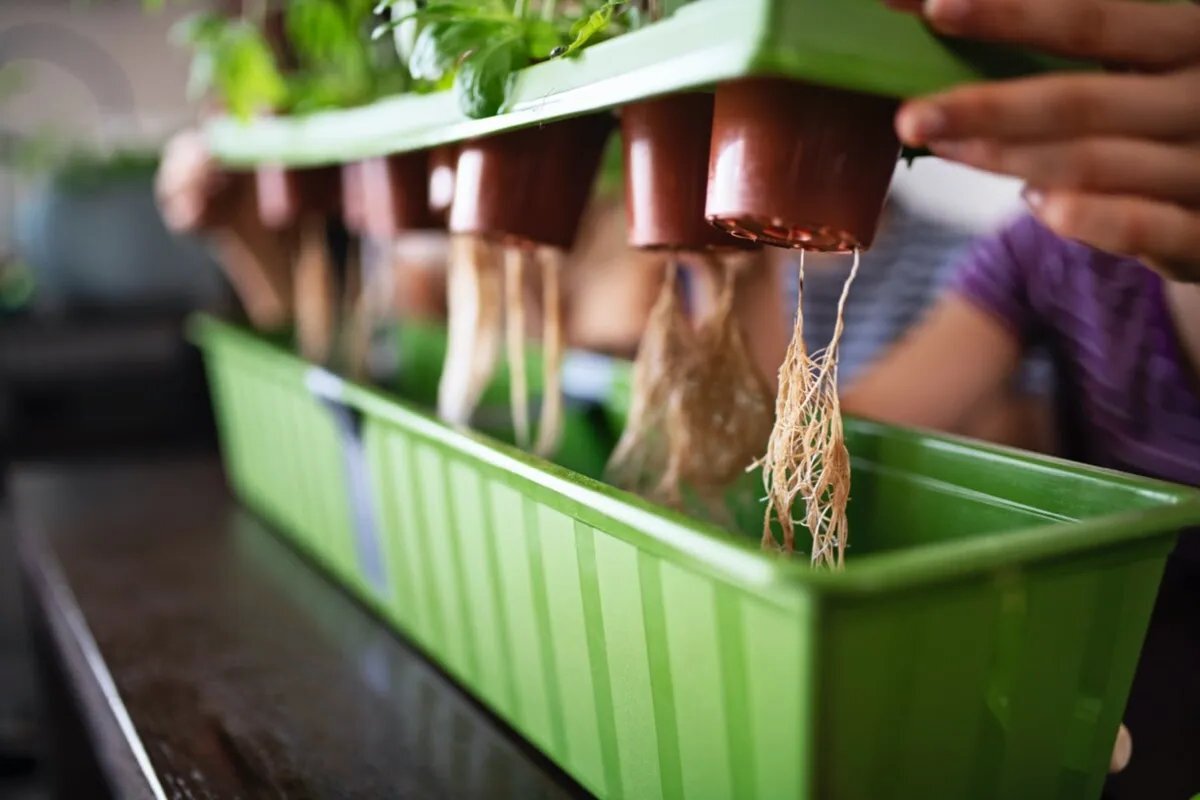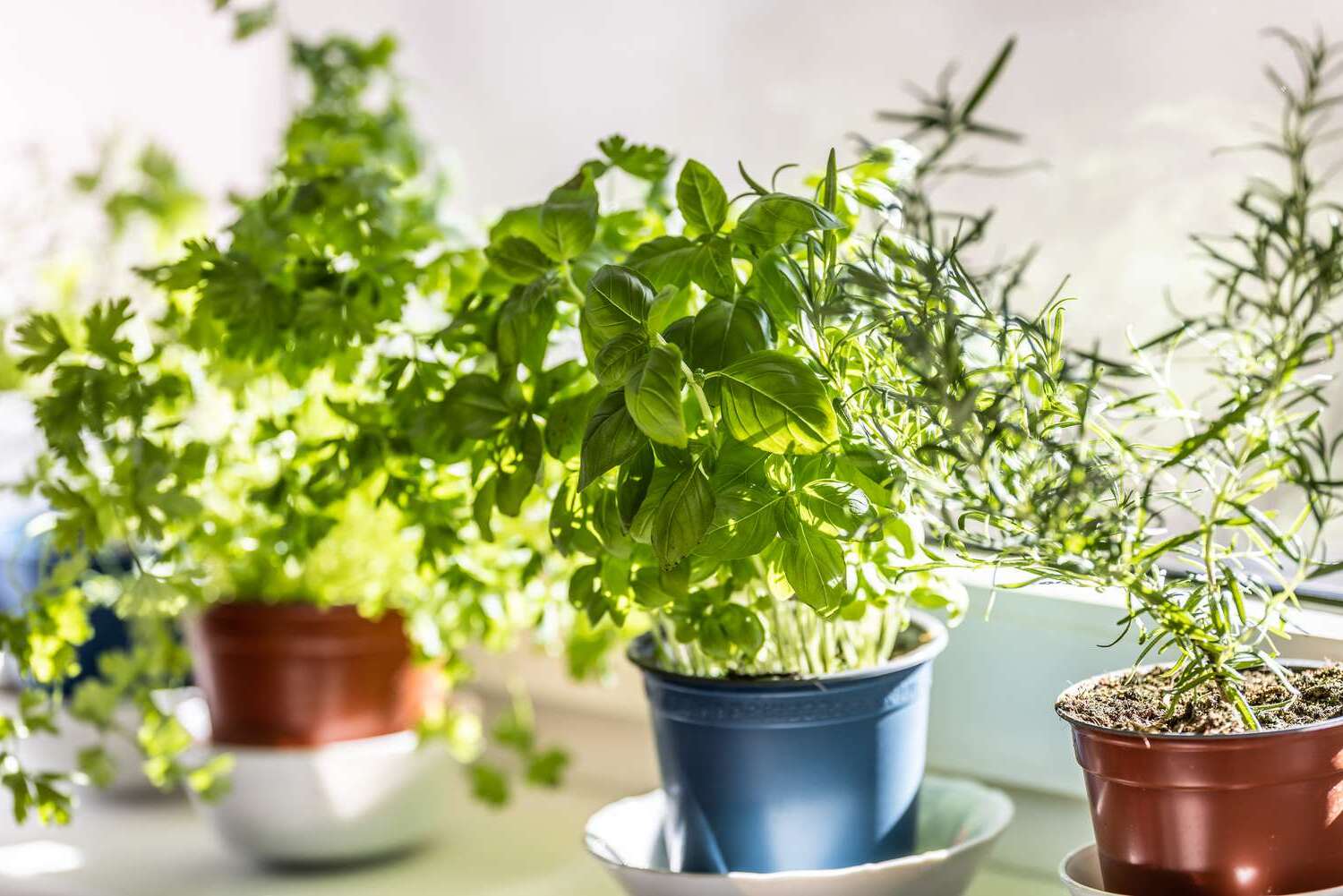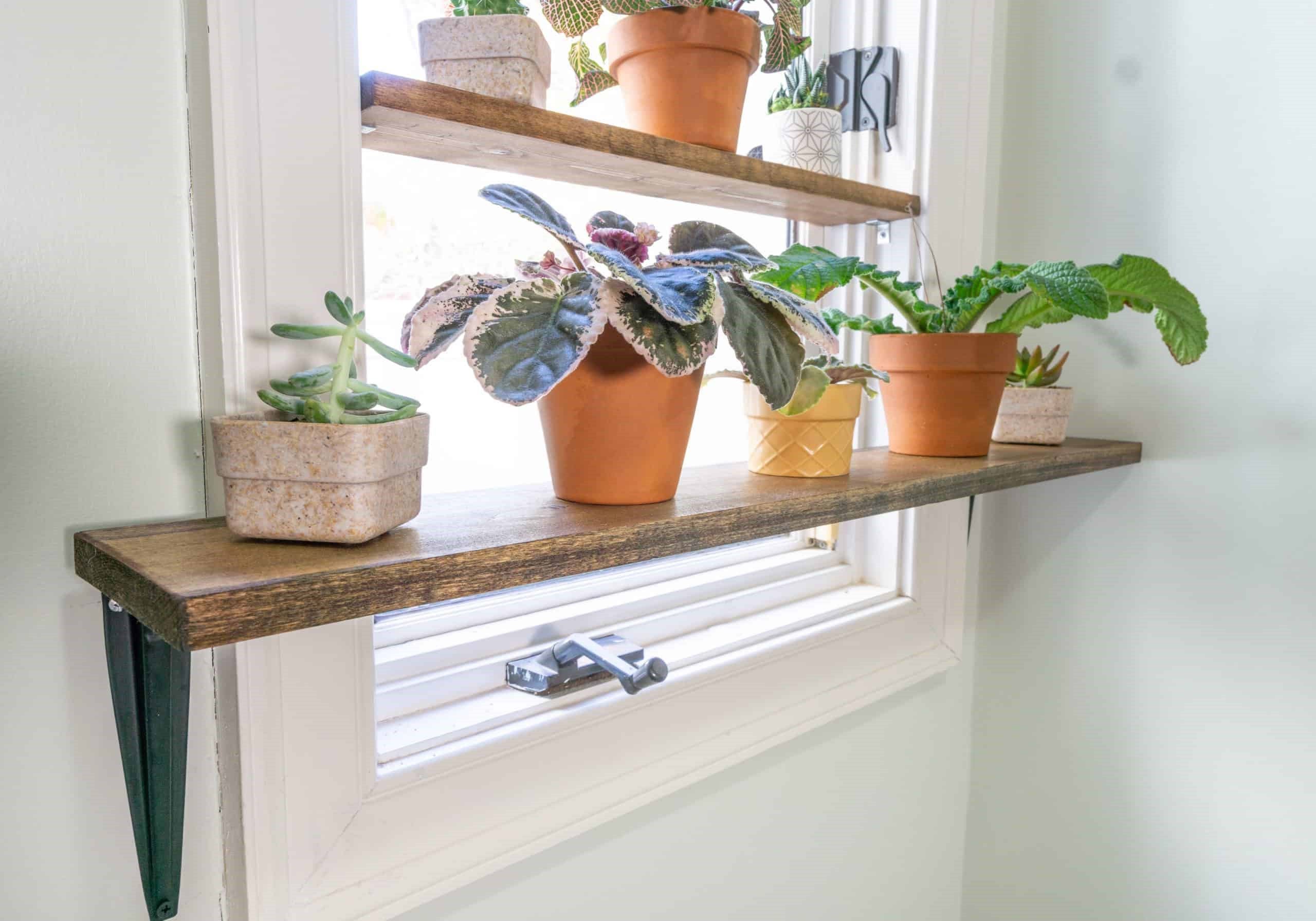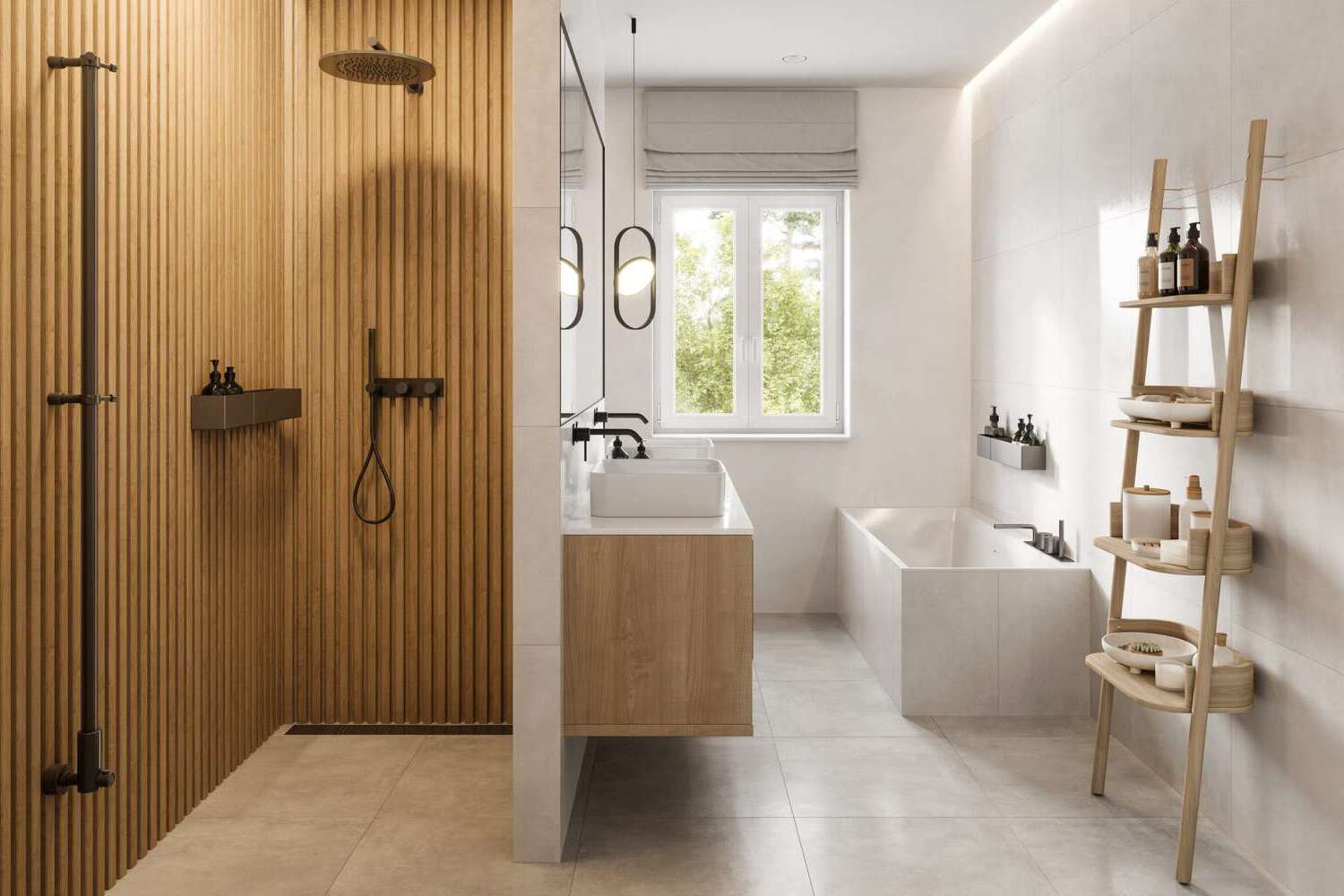Home>Create & Decorate>DIY & Crafts>DIY Hydroponics: A Beginner’s Guide To Growing Plants Without Soil


DIY & Crafts
DIY Hydroponics: A Beginner’s Guide To Growing Plants Without Soil
Published: May 9, 2024

Content Creator specializing in woodworking and interior transformations. Caegan's guides motivate readers to undertake their own projects, while his custom furniture adds a personal touch.
Discover the art of DIY hydroponics with this comprehensive beginner's guide. Learn how to grow plants without soil and unleash your creativity in the world of DIY & Crafts.
(Many of the links in this article redirect to a specific reviewed product. Your purchase of these products through affiliate links helps to generate commission for Twigandthistle.com, at no extra cost. Learn more)
Introduction
Are you interested in growing your own plants but don't have a lot of outdoor space or fertile soil? If so, DIY hydroponics might be the perfect solution for you. Hydroponic gardening allows you to grow plants without soil, using nutrient-rich water instead. In this beginner's guide, we'll explore the world of hydroponics, its benefits, and how you can get started with your very own DIY hydroponic system. Whether you're a seasoned gardener or a complete novice, this guide will provide you with the knowledge and confidence to embark on your hydroponic gardening journey.
Read more: How to Build a Self-Watering Window Box
Understanding Hydroponics
Hydroponics is a method of growing plants without using traditional soil. Instead, plants are grown in a nutrient-rich water solution, providing them with everything they need to thrive. The word "hydroponics" comes from the Greek words "hydro," meaning water, and "ponos," meaning labor. This method of gardening has been used for centuries, with evidence of ancient civilizations using hydroponic techniques to grow crops. Today, hydroponics has evolved into a popular and efficient way to cultivate a wide variety of plants, from leafy greens and herbs to fruits and vegetables.
One of the key principles of hydroponics is that it allows for precise control over the growing environment. By providing plants with the exact nutrients they need, as well as the right amount of water and oxygen, hydroponic systems can optimize plant growth and yield. Additionally, because the plants are not competing with each other for nutrients in soil, they can grow more quickly and produce higher yields than traditional gardening methods. This makes hydroponics an attractive option for individuals looking to maximize their growing space and harvest.
In hydroponic systems, plants are typically supported by an inert growing medium, such as perlite, vermiculite, or coconut coir, which helps anchor the roots and provides stability. The nutrient solution is then delivered directly to the roots, either through a passive system like wick or capillary action, or an active system like a pump. This direct delivery of nutrients allows the plants to focus their energy on growth and fruit production, rather than searching for essential elements in the soil.
Overall, understanding hydroponics involves recognizing its ability to provide a controlled environment for plant growth, its efficient use of space, and its direct delivery of nutrients to the roots. With this knowledge, you can appreciate the potential of hydroponic gardening and its suitability for a wide range of plants.
Benefits of Hydroponic Gardening
- Water Conservation: Hydroponic systems use significantly less water than traditional soil-based gardening. The closed-loop design of many hydroponic setups allows for the recirculation of water, minimizing waste and promoting efficient water usage.
- Space Efficiency: Hydroponic gardening is ideal for individuals with limited outdoor space. Vertical hydroponic systems, in particular, make it possible to grow a large number of plants in a small area, maximizing the use of available space.
- Year-Round Growing: With hydroponics, you can grow plants year-round, regardless of the outdoor climate. This means you can enjoy a constant supply of fresh produce, even during the winter months.
- Higher Yields: Hydroponic plants often grow faster and produce higher yields compared to traditional soil-grown plants. The controlled environment of hydroponic systems allows for optimal nutrient uptake, resulting in healthier and more abundant harvests.
- Pest and Disease Control: Without soil, many pests and diseases that typically affect traditional gardens are less of a concern in hydroponic setups. This can reduce the need for chemical pesticides and fungicides, resulting in cleaner, healthier produce.
- Nutrient Control: In hydroponic gardening, you have precise control over the nutrients your plants receive. This allows you to tailor the nutrient solution to the specific needs of different plant varieties, ensuring optimal growth and development.
- Environmental Benefits: Hydroponic systems can be designed to minimize environmental impact. By using sustainable materials, conserving water, and reducing the need for chemical inputs, hydroponic gardening can be an eco-friendly choice for conscientious growers.
These benefits make hydroponic gardening an attractive option for individuals looking to grow their own fresh produce in a space-efficient, sustainable, and controlled manner. Whether you’re interested in cultivating herbs, leafy greens, or even fruiting plants, the advantages of hydroponics can help you achieve successful and rewarding harvests.
Getting Started with DIY Hydroponics
Embarking on your DIY hydroponics journey is an exciting and rewarding endeavor. To get started, you'll need to gather the necessary materials and familiarize yourself with the basic principles of hydroponic gardening. Here's a step-by-step guide to help you begin your DIY hydroponics adventure:
-
Research and Education: Before diving in, take the time to research and educate yourself about the different types of hydroponic systems available. Understanding the pros and cons of each system will help you make an informed decision about which one best suits your needs and space constraints.
-
Select a Suitable Location: Choose a location for your hydroponic setup that receives adequate natural light or can accommodate artificial grow lights. Ensure that the area is well-ventilated and easily accessible for maintenance and monitoring.
-
Gather Essential Supplies: Depending on the type of hydroponic system you choose, gather the necessary supplies, including a reservoir or container, growing medium, nutrient solution, pH testing kit, and any additional components specific to your selected system.
-
Choose Your Hydroponic System: Select a hydroponic system that aligns with your gardening goals and available space. Options range from simple, beginner-friendly systems like the Kratky method to more complex setups such as nutrient film technique (NFT) or deep water culture (DWC) systems.
-
Acquire Planting Containers: Obtain suitable containers or trays to hold your plants and growing medium. These can be specially designed net pots, grow cups, or DIY containers made from recycled materials.
-
Select Your Growing Medium: Choose a growing medium that provides support for the plants' roots while allowing for adequate aeration and moisture retention. Common options include perlite, vermiculite, coconut coir, and rockwool.
-
Source High-Quality Nutrients: Invest in a quality hydroponic nutrient solution formulated for the specific growth stages of your chosen plants. Look for a balanced blend of essential macro and micronutrients to support healthy growth and development.
-
Assemble Your System: Once you have all the necessary components, assemble your chosen hydroponic system according to the manufacturer's instructions or DIY plans. Ensure that all connections are secure and that the system is level and stable.
-
Prepare Your Nutrient Solution: Mix your nutrient solution according to the manufacturer's recommendations, adjusting the pH as needed to ensure it falls within the optimal range for your plants.
-
Choose Your Plants: Select plants that are well-suited to hydroponic growing, such as leafy greens, herbs, strawberries, or tomatoes. Consider factors such as space requirements, light intensity, and temperature preferences when making your selections.
By following these steps, you can lay the foundation for your DIY hydroponic garden and set yourself up for a successful growing experience. Remember to start small and gradually expand your hydroponic setup as you gain confidence and expertise in this innovative gardening method.
Choosing the Right System for Your Needs
When it comes to DIY hydroponics, selecting the right system is crucial to the success of your garden. There are several types of hydroponic systems to choose from, each with its own advantages and considerations. Here are some popular options to consider:
-
Deep Water Culture (DWC): In a DWC system, plants are suspended over a reservoir of nutrient solution, with their roots submerged in the oxygenated water. This method is relatively simple and low-maintenance, making it ideal for beginners.
-
Nutrient Film Technique (NFT): NFT systems involve a continuous flow of nutrient solution over the plant roots, providing them with a constant supply of water and nutrients. These systems are space-efficient and well-suited for growing leafy greens and herbs.
-
Ebb and Flow (Flood and Drain): Ebb and flow systems periodically flood the plant roots with nutrient solution before draining it back into a reservoir. This cycle ensures adequate oxygenation for the roots and is suitable for a wide range of plant varieties.
-
Kratky Method: The Kratky method is a passive hydroponic system that requires no electricity or moving parts. Plants are grown in a stationary container filled with nutrient solution, and the water level gradually decreases as the plants consume it.
-
Aeroponics: Aeroponic systems mist the plant roots with a nutrient solution, allowing them to absorb oxygen directly from the air. This high-oxygen environment promotes rapid growth and is well-suited for growing delicate plants.
When choosing a system, consider factors such as available space, desired plant varieties, and your level of experience with hydroponics. Additionally, assess the maintenance requirements and resource inputs of each system to ensure that it aligns with your gardening goals and lifestyle. By selecting the right system for your needs, you can create an efficient and productive DIY hydroponic garden tailored to your preferences and capabilities.
Read more: DIY Window Plant Hanger Guide
Selecting the Best Plants for Hydroponic Growing
When it comes to hydroponic gardening, choosing the right plants is essential for a successful and bountiful harvest. While a wide variety of plants can thrive in hydroponic systems, some are particularly well-suited to this innovative growing method. Here are some popular and rewarding options for hydroponic cultivation:
Leafy Greens
Leafy greens such as lettuce, spinach, kale, and Swiss chard are excellent choices for hydroponic growing. These fast-growing plants have shallow root systems, making them well-adapted to the nutrient-rich water environment of hydroponic systems. With the right conditions, you can enjoy a continuous supply of fresh, crisp greens throughout the growing season.
Herbs
Herbs like basil, cilantro, mint, and parsley flourish in hydroponic setups, offering a convenient and flavorful addition to your culinary endeavors. Their compact size and rapid growth make them ideal candidates for hydroponic cultivation, allowing you to elevate your dishes with homegrown herbs year-round.
Tomatoes
Tomatoes are a popular choice for hydroponic gardening, thanks to their prolific fruit production and adaptability to soilless growing. Compact or dwarf tomato varieties are particularly well-suited to hydroponic systems, providing a plentiful harvest of juicy, vine-ripened tomatoes without the need for extensive outdoor space.
Read more: How to Build Cedar Window Boxes
Strawberries
Hydroponic strawberry cultivation offers the opportunity to enjoy sweet, succulent berries without the challenges of traditional soil-based gardening. Compact and everbearing strawberry varieties thrive in hydroponic environments, producing an abundance of delectable fruits for your enjoyment.
Peppers
Bell peppers and chili peppers can thrive in hydroponic systems, offering a continuous harvest of vibrant, flavorful peppers. With proper support and nutrient delivery, pepper plants can flourish in hydroponic setups, providing a colorful and productive addition to your indoor or outdoor garden.
Cucumbers
Cucumbers are well-suited to hydroponic cultivation, offering a refreshing and versatile addition to your homegrown produce. Compact or bush cucumber varieties can thrive in nutrient-rich water, yielding an abundance of crisp, flavorful cucumbers for salads, pickling, and snacking.
Microgreens
Microgreens, such as arugula, radish, and mustard greens, are perfect for hydroponic growing due to their rapid growth and high nutritional value. These tender, young greens can be harvested in a matter of weeks, adding a burst of flavor and nutrients to salads, sandwiches, and culinary creations.
By selecting plants that are well-adapted to hydroponic growing, you can create a diverse and thriving garden that provides an abundance of fresh produce throughout the year. Whether you're a fan of leafy greens, herbs, or fruiting plants, hydroponic gardening offers a versatile and rewarding platform for cultivating a wide range of plant varieties.
Read more: How to Build a DIY Kitchen Garden Window
Setting Up Your Hydroponic System
Setting up your hydroponic system is a crucial step in creating an optimal environment for plant growth. Whether you've chosen a deep water culture, nutrient film technique, or another hydroponic system, the following guidelines will help you establish and fine-tune your setup for successful cultivation.
1. Assemble the Components
Gather all the components of your chosen hydroponic system, including the reservoir, growing medium, nutrient solution, pump (if applicable), tubing, and any additional accessories. Ensure that all parts are clean and in good working condition before proceeding.
2. Position the System
Select a suitable location for your hydroponic setup, considering factors such as natural light exposure, temperature stability, and accessibility for maintenance. If using artificial grow lights, position them at the appropriate distance and angle to provide optimal illumination for your plants.
3. Install the Reservoir and Pump
If your system requires a pump, install it in the reservoir according to the manufacturer's instructions. Ensure that the pump is securely positioned and connected to the appropriate tubing for nutrient solution delivery.
Read more: How to Build an Indoor Window Planter Box
4. Add the Growing Medium
Fill the planting containers or growing trays with the chosen growing medium, ensuring that it provides adequate support for the plant roots while allowing for proper aeration and moisture retention. Place the growing containers in their designated positions within the system.
5. Mix and Test the Nutrient Solution
Prepare the nutrient solution by mixing the appropriate ratio of hydroponic nutrients with water. Use a pH testing kit to measure the pH level of the solution and make any necessary adjustments to ensure it falls within the optimal range for your plants.
6. Set Up the Nutrient Delivery System
If your system utilizes a recirculating nutrient solution, connect the tubing to the pump and position the delivery outlets to ensure even distribution of the solution to the plant roots. Test the system to confirm that the nutrient solution flows as intended.
7. Introduce the Plants
Carefully transplant your selected plants into the growing containers, ensuring that their roots are adequately covered by the growing medium and in direct contact with the nutrient solution. Gently adjust the positioning of the plants as needed to promote optimal growth.
Read more: DIY Window Frame Decor Ideas
8. Monitor and Adjust
Once your hydroponic system is set up and operational, monitor the water level, nutrient concentration, and pH regularly to maintain optimal growing conditions. Make adjustments as necessary to ensure that your plants receive the right balance of water and nutrients.
By following these steps, you can establish a well-designed and functional hydroponic system that provides the ideal growing environment for your plants. With proper setup and maintenance, your hydroponic garden can thrive, yielding a bountiful harvest of fresh, healthy produce.
Maintaining Your Hydroponic Garden
Maintaining your hydroponic garden is essential for ensuring the ongoing health and productivity of your plants. By implementing regular maintenance tasks and staying attentive to the needs of your hydroponic system, you can create an optimal growing environment and address any issues that may arise. Here are key maintenance practices to keep your hydroponic garden flourishing:
1. Monitor Nutrient Levels
Regularly check the nutrient levels in your hydroponic system to ensure that the plants are receiving the essential elements they need for healthy growth. Use a TDS (Total Dissolved Solids) meter to measure the concentration of nutrients in the water. Adjust the nutrient solution as needed to maintain the appropriate levels for your specific plant varieties.
2. pH Management
Monitor the pH level of the nutrient solution to ensure it falls within the optimal range for your plants. Fluctuations in pH can impact nutrient availability and plant health. Use a pH testing kit to measure the pH regularly and make adjustments using pH up or down solutions to maintain a stable and suitable pH level.
Read more: How to Build a DIY Greenhouse Roof
3. Water and Oxygenation
Ensure that the water in your hydroponic system remains well-oxygenated to support healthy root development. Oxygenation can be achieved through the use of air stones, air pumps, or other aeration devices. Regularly inspect and clean air stones to prevent clogging and maintain efficient oxygenation.
4. Pest and Disease Management
Monitor your plants for signs of pests or diseases and take proactive measures to prevent infestations. Implement integrated pest management strategies, such as introducing beneficial insects or using organic pest control methods. Regularly inspect the plant foliage and growing medium for any signs of pest activity or disease symptoms.
5. Pruning and Training
As your plants grow, regularly prune and train them to maintain an optimal shape and encourage productive growth. Remove any dead or yellowing leaves, and guide the growth of vines or sprawling plants to maximize light exposure and airflow within the hydroponic system.
6. Cleaning and Sanitization
Periodically clean and sanitize the components of your hydroponic system to prevent the buildup of algae, mineral deposits, or pathogens. Thoroughly rinse and disinfect growing containers, tubing, and reservoirs to maintain a clean and hygienic growing environment for your plants.
7. Regular Inspections
Conduct routine inspections of your hydroponic system to identify any potential issues or malfunctions. Check for leaks, clogs, or irregularities in nutrient delivery. Address any issues promptly to prevent disruptions to the growing environment and maintain consistent plant health.
8. Nutrient Solution Replenishment
Regularly replenish the nutrient solution in your hydroponic system to ensure that the plants have access to a fresh and balanced supply of essential nutrients. Monitor the water level in the reservoir and top up with a properly mixed nutrient solution as needed to maintain optimal growing conditions.
By incorporating these maintenance practices into your hydroponic gardening routine, you can create a thriving and productive growing environment for your plants. Regular attention to nutrient levels, pH, water quality, and plant health will contribute to the long-term success of your hydroponic garden, allowing you to enjoy a continuous harvest of fresh, homegrown produce.
Troubleshooting Common Issues
Hydroponic gardening, while efficient and rewarding, may encounter common issues that require prompt attention to maintain the health and vitality of your plants. By being proactive and observant, you can identify and address these issues effectively. Here are some common problems that hydroponic gardeners may encounter, along with troubleshooting tips to mitigate their impact:
Nutrient Deficiencies
One of the most common issues in hydroponic gardening is nutrient deficiencies, which can manifest as yellowing or discolored leaves, stunted growth, or poor fruit development. To address this issue, regularly monitor the nutrient levels in the solution and adjust the nutrient concentration to ensure that your plants receive the essential elements they need for healthy growth. Additionally, check the pH level of the nutrient solution, as imbalances can affect nutrient uptake. Consider using a high-quality, balanced nutrient solution formulated for hydroponic cultivation to provide comprehensive plant nutrition.
Read more: How to Make Self-Watering Window Boxes
pH Fluctuations
Fluctuations in the pH level of the nutrient solution can impact nutrient availability and plant health. If you notice pH fluctuations, regularly test the pH of the solution and make adjustments using pH up or down solutions to maintain a stable and suitable pH level. Consider using a pH buffering agent to help stabilize the pH and prevent rapid shifts that can stress the plants. By maintaining a consistent pH level, you can promote optimal nutrient uptake and overall plant well-being.
Algae Growth
Algae growth in the nutrient solution or on the surfaces of your hydroponic system components can disrupt the growing environment and compete with your plants for essential nutrients. To address algae growth, minimize light exposure to the nutrient solution by using opaque reservoirs or covering the system to prevent light penetration. Additionally, consider adding a UV sterilizer or algaecide to the system to inhibit algae growth and maintain a clean and hygienic environment for your plants.
Root Rot
Root rot can occur in hydroponic systems due to overwatering, poor oxygenation, or the presence of pathogens. If you observe signs of root rot, such as dark, mushy roots or wilting plants, take immediate action to address the issue. Improve oxygenation by increasing aeration in the nutrient solution, and consider using beneficial bacteria or root supplements to promote a healthy root environment. Additionally, adjust the watering schedule to prevent waterlogging and ensure adequate oxygenation for the roots.
Temperature Fluctuations
Fluctuations in temperature can impact plant growth and nutrient uptake in hydroponic systems. To mitigate temperature fluctuations, maintain a stable and moderate temperature within the growing environment. Consider using a thermometer to monitor the temperature and implement measures such as insulation, shading, or ventilation to regulate the climate. By maintaining a consistent temperature, you can create an optimal growing environment for your plants.
Read more: How to Make a DIY Planter Liner
Pest Infestations
Pest infestations, such as aphids, spider mites, or whiteflies, can pose a threat to your hydroponic garden. Implement integrated pest management strategies, such as introducing beneficial insects, using insecticidal soaps, or applying organic pest control methods to address pest infestations. Regularly inspect your plants for signs of pest activity and take proactive measures to prevent infestations from compromising the health of your plants.
By addressing these common issues with proactive monitoring and targeted interventions, you can maintain a healthy and thriving hydroponic garden. Regular observation, prompt action, and a proactive approach to troubleshooting will contribute to the long-term success of your hydroponic cultivation, allowing you to enjoy a continuous harvest of fresh, homegrown produce.
Harvesting and Enjoying Your Hydroponically Grown Plants
As your hydroponically grown plants reach maturity, the time for harvesting and enjoying the fruits of your labor approaches. Harvesting your hydroponic produce is a gratifying culmination of your efforts and marks the transition from cultivation to culinary enjoyment. Here's a detailed guide on the process of harvesting and savoring the bounty of your hydroponically grown plants:
1. Timing the Harvest
Timing is crucial when it comes to harvesting your hydroponically grown plants. Different plant varieties have specific indicators of readiness for harvest, such as fruit color, size, or texture. Refer to the growth and maturity timelines for each plant variety to determine the optimal time for harvesting. For leafy greens and herbs, regular harvesting of outer leaves or stems promotes continuous growth and ensures a fresh supply of tender, flavorful foliage.
2. Harvesting Techniques
Utilize appropriate harvesting techniques to ensure the quality and longevity of your hydroponically grown plants. Use clean, sharp scissors or pruning shears to carefully snip mature leaves, fruits, or stems from the plants. Avoid damaging the remaining plant structure and handle the harvested produce with care to prevent bruising or damage.
Read more: How to Build Adjustable Garage Shelving
3. Post-Harvest Handling
After harvesting, promptly rinse the produce with clean water to remove any residual growing medium or debris. Gently pat the harvested plants dry and store them in a cool, well-ventilated area to maintain freshness. For fruits and vegetables, consider refrigerating them to prolong shelf life and preserve their flavor and nutritional value.
4. Culinary Delights
Once harvested, your hydroponically grown produce is ready to elevate your culinary creations. Incorporate freshly harvested herbs into aromatic sauces, flavorful dressings, or vibrant garnishes. Use crisp, tender leafy greens as the foundation for vibrant salads, nutrient-packed smoothies, or wholesome wraps. Enjoy the succulent sweetness of hydroponically grown fruits and vegetables in refreshing salads, savory dishes, or as wholesome snacks.
5. Appreciating the Harvest
Take the time to savor the flavors, textures, and aromas of your hydroponically grown harvest. Whether it's the vibrant crunch of freshly harvested lettuce, the aromatic bouquet of homegrown herbs, or the juicy sweetness of ripe hydroponic fruits, each bite is a testament to your dedication and the exceptional quality of hydroponically cultivated produce.
6. Continuous Harvesting
Hydroponic gardening offers the advantage of continuous harvesting, allowing you to enjoy a steady supply of fresh, homegrown produce. As you harvest, new growth emerges, ensuring a perpetual cycle of cultivation and enjoyment. Embrace the satisfaction of a bountiful and sustainable harvest, knowing that your hydroponic garden provides a consistent source of wholesome, flavorful produce.
Read more: DIY Small Closet Grow Room Setup
7. Sharing the Bounty
Share the abundance of your hydroponic harvest with friends, family, and neighbors, spreading the joy of homegrown goodness. Whether it's a vibrant bouquet of freshly picked herbs, a basket of crisp, hydroponically grown greens, or a selection of ripe, flavorful fruits, sharing the bounty of your hydroponic garden fosters a sense of community and appreciation for the rewards of sustainable, homegrown produce.
8. Reflecting on the Journey
As you savor the fruits of your hydroponic harvest, take a moment to reflect on the journey from seed to table. Celebrate the dedication, care, and innovation that went into cultivating your hydroponic garden. Each bite of your homegrown produce is a testament to the rewards of hydroponic gardening and the potential for sustainable, space-efficient cultivation.
By following these steps, you can fully embrace the process of harvesting and enjoying the abundance of your hydroponically grown plants. From the thrill of the harvest to the culinary delights and the sense of community, the journey of hydroponic gardening culminates in a rich tapestry of flavors, experiences, and shared enjoyment.





